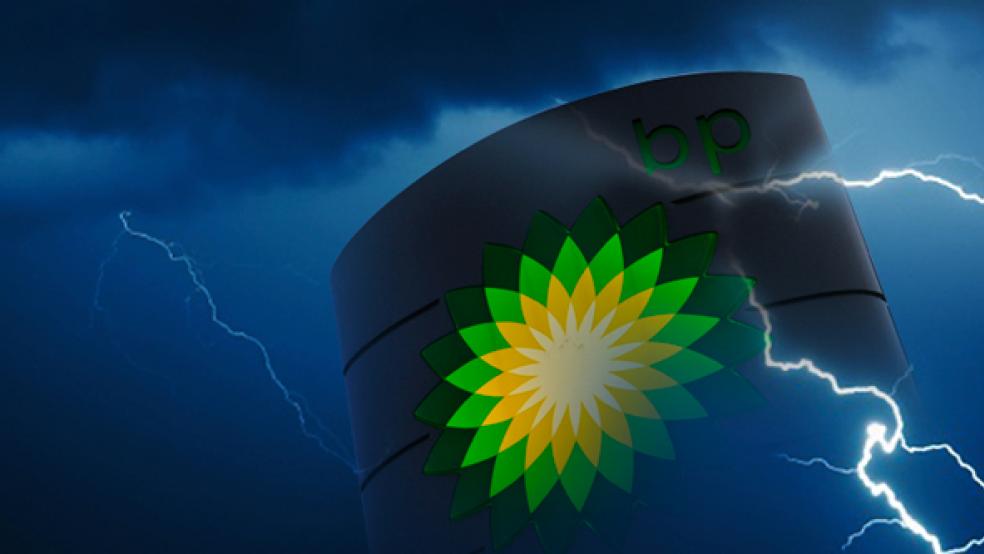Nearly two years after more than 200 million gallons of crude oil poured into the Gulf of Mexico following the deadly explosion of the Deepwater Horizon rig, federal prosecutors are set to open a civil case on Monday against oil giant BP, accusing it of gross negligence. Prosecutors are alleging that BP, owner of the well, made a series of decisions that resulted in the deadly explosion of the rig, which killed 11 people, injured 17, and severely compromised a vibrant local economy that had been well along in its rebuilding efforts after suffering the devastation of Hurricane Katrina several years before.
The spill was the largest offshore oil disaster in the petroleum industry’s history. The chief counsel of the presidential oil spill commission issued a final report in early 2011, laying considerable blame on BP for the disaster.
The allegations, contained in court filings obtained by The Wall Street Journal, are expected to be argued in a civil trial beginning Monday in federal court in New Orleans. The case is being brought by a number of plaintiffs, including the federal government, several states, and thousands of independent claimants who say they were harmed by the 87-day oil spill.
BP, as well as the rig’s contractors, Houston-based Halliburton and Transocean, a Swiss company, could face $17 billion in water pollution penalties alone if the court finds gross negligence. BP would then take a serious hit to its balance sheet: The company has set aside only $3.5 billion to cover the cost of penalties. (It’s set aside a total of $40 billion to cover the cleanup.) The case – which could still be settled before or during the trial – is expected to last at least nine months.
Bob Dudley, chief executive of BP, indicated earlier this month that the company was open to talking to the plaintiffs. When he announced the company’s annual results, Dudley said, “We are prepared to settle if we can do so on fair and reasonable terms. But if this is not possible, we are preparing vigorously for trial.”
An attorney for BP told The Wall Street Journal the company did not engage in gross negligence. “BP studied the Macondo prospect, used a peer-reviewed, government-approved well design, and relied upon reliable contractors to drill, cement, continuously monitor, and control the well,” according to Mike Brock of Covington & Burling LLP.

Oceanographer Carl Safina, author of a 2011 book about the BP oil spill, A Sea of Flames, told The Fiscal Times last year that “screw-ups [from the disaster] would go around to all the major companies involved.” That included Halliburton, whose cement was used to close the well – “though it kept failing tests,” said Safina – and Transocean, owner of the drilling rig, “which put material down into the well to try to save disposal costs, which then clogged up a pressure gauge that implied to the people on the rig that there was no oil and gas getting into the well.” When the build-up of pressure was ignored, “somebody from Transocean tried to explain it away, was completely wrong, and paid for that mistake with his life.” That individual was killed in the explosion along with ten others, noted Safina.
Gulf Coast beaches were able to resume hosting spring break visitors one year after the disaster, in April of 2011, but a spokesman for the National Oceanic and Atmospheric Agency (NOAA) said at the time that there was “no basis to conclude that the Gulf recovery would be complete by 2012.” As late as July 2011, nearly 500 miles of coastline in Louisiana, Mississippi, Alabama and Florida remained contaminated by oil, according to the NOAA, and in October of last year, dolphins and whales continued to perish at twice the usual rate.
The BP well was located in 5,000 feet of water – “both a problem and a godsend,” Peter Ricchuiti, director of research at the A.B. Freeman School of Business at Tulane University, told The Fiscal Times. “It opened up new reservoirs of oil. We thought it was so promising. Then we had this other side of it.” A moratorium on deepwater drilling after the oil spill lasted for five months, followed by an array of new regulations.
The mega-civil suit encompasses 72 million pages of documents, 20,000 exhibits and 303 depositions. In addition to the Justice Department, there are some 120,000 plaintiffs, including condo owners and restaurateurs who assert their once beautiful beach-side property is no longer. If BP is found grossly negligent, the fine against the company could increase from $1,100 per barrel of oil spilled to a maximum of $4,300 per barrel – roughly a $13 billion difference. (The number is based on the 4.1 million barrels of oil left in the Gulf of Mexico after BP cleaned up an estimated 800,000 barrels.)
“There’s enormous pressure on BP to settle [this case],” David Uhlmann, director of the environmental law program at the University of Michigan, told The Los Angeles Times. “No matter how confident BP is about the gross negligence question, that’s just an extraordinary amount of risk for any trial.” Last week, MOEX, a subsidiary of Japan’s Mitsui Oil Exploration Company, which owned 10 percent of the Macondo well, reached a settlement totaling $90 million, including $5 million in penalties and $5 five in coastal restoration money for Mississippi.




